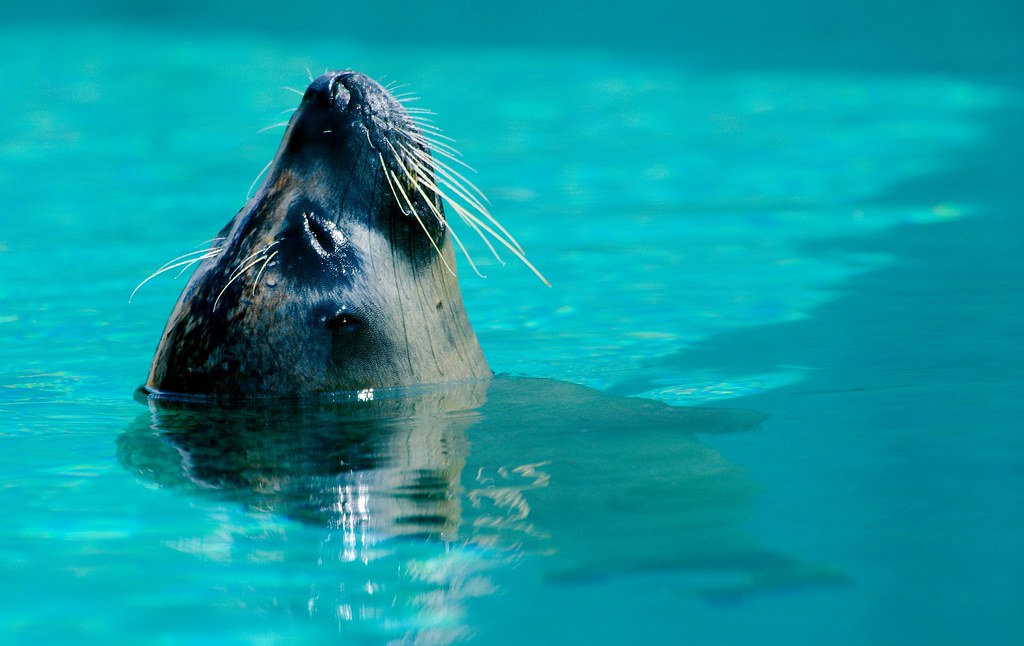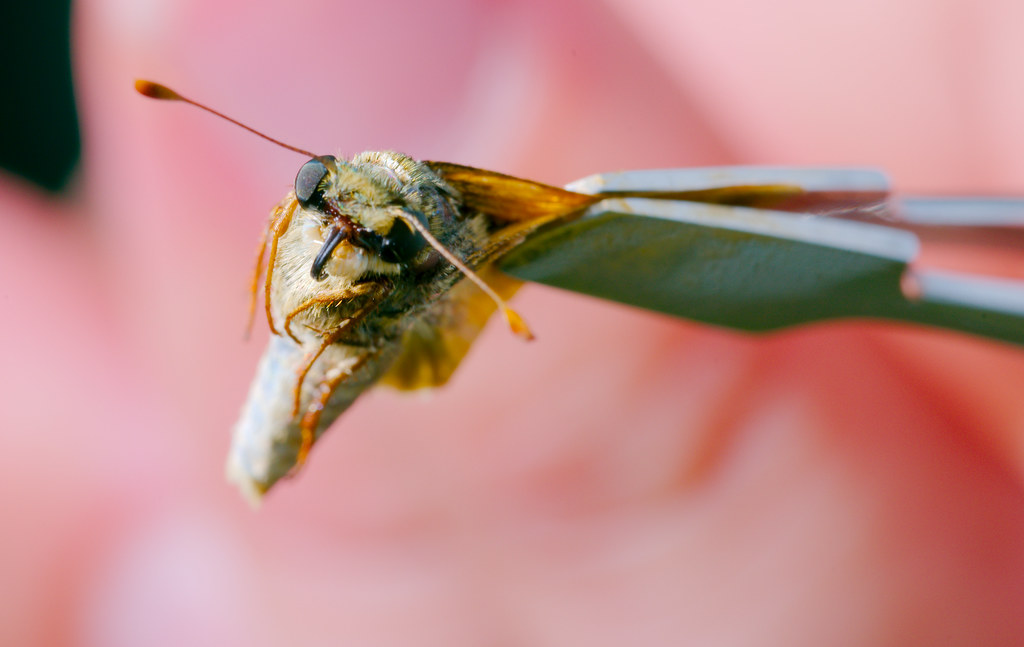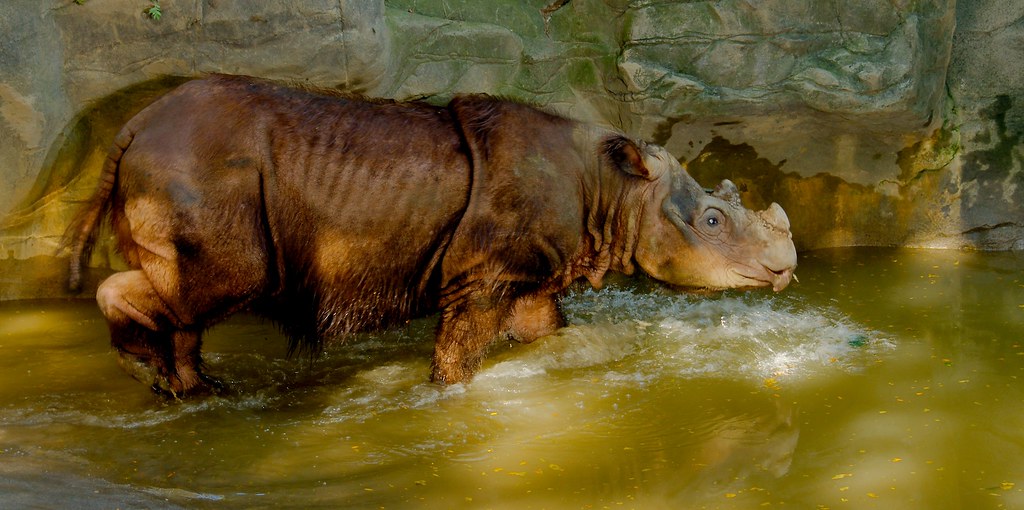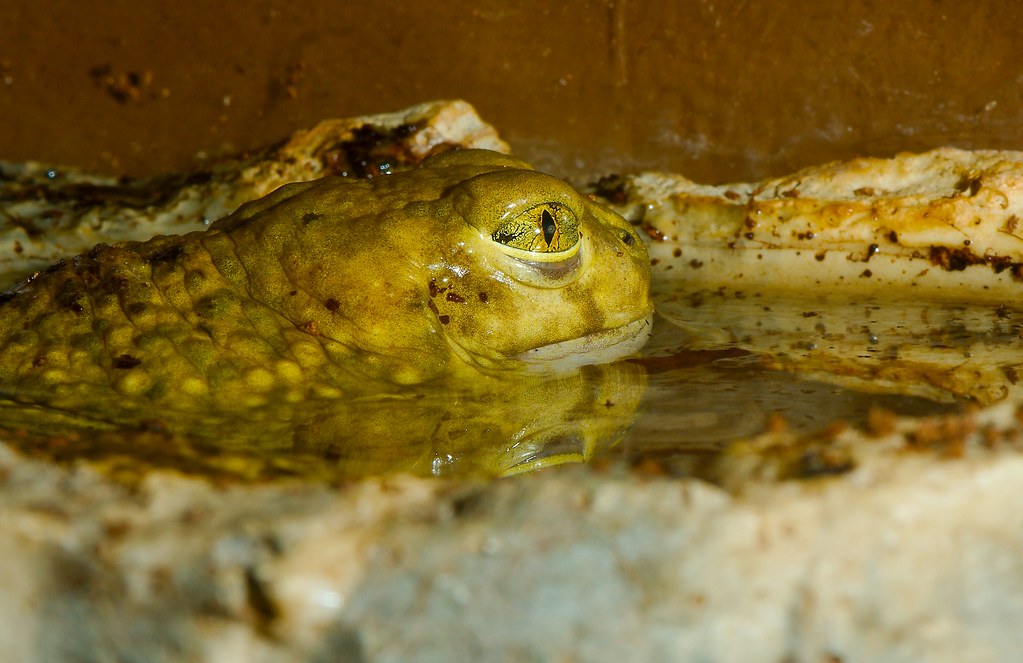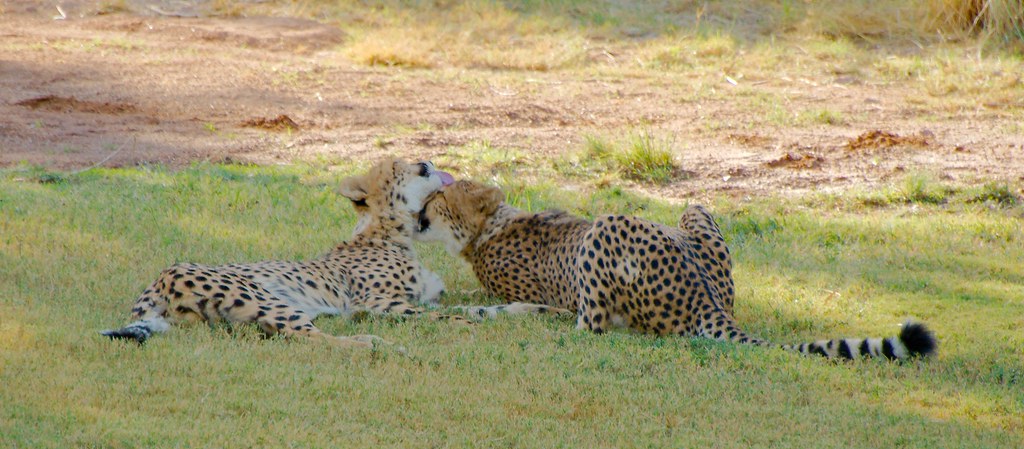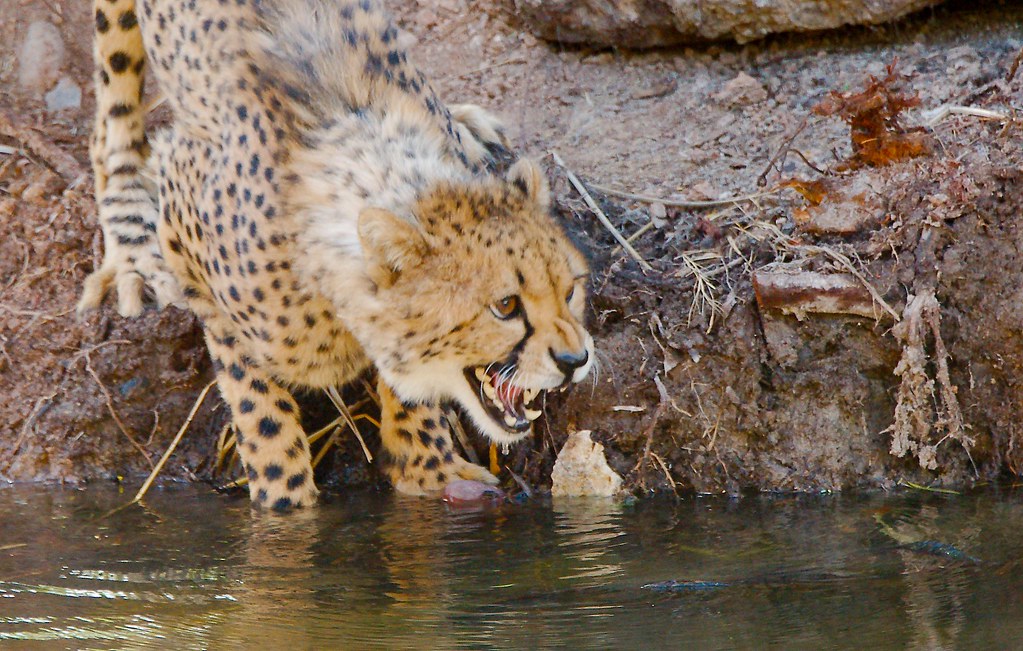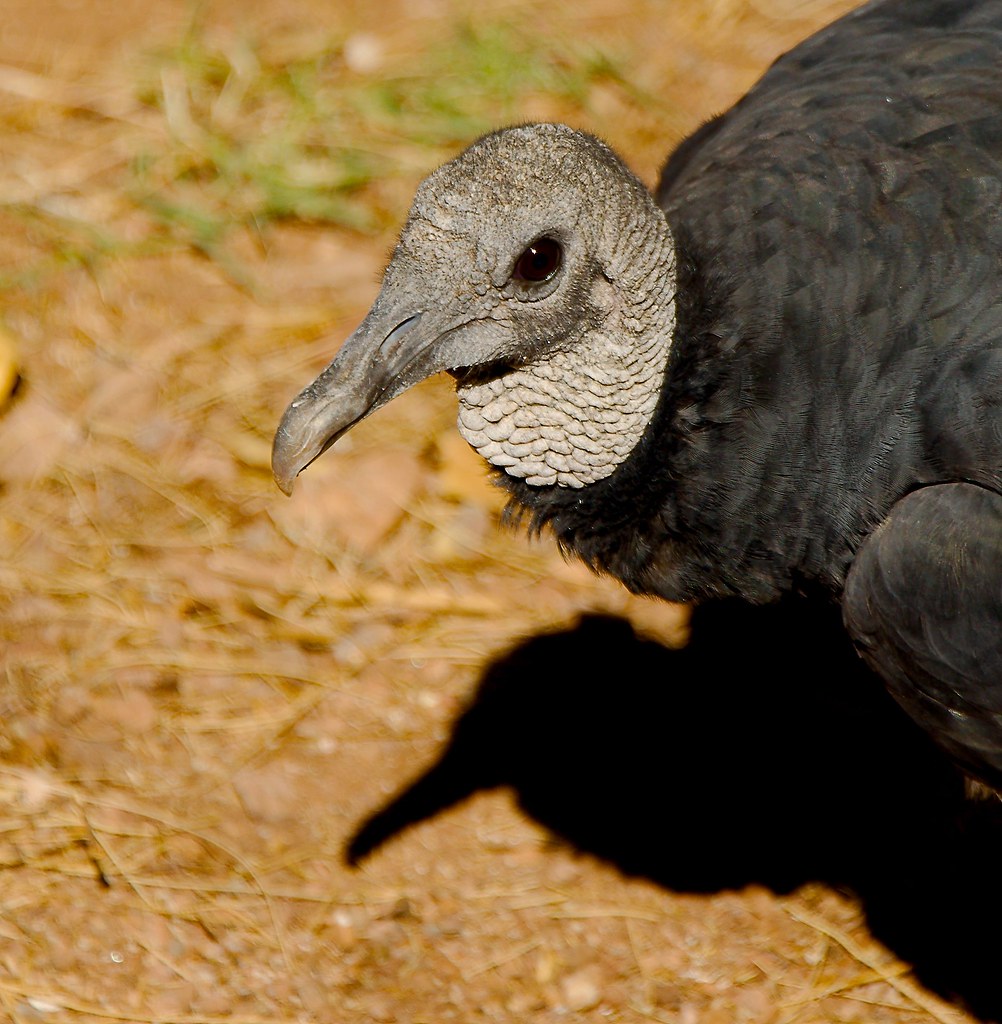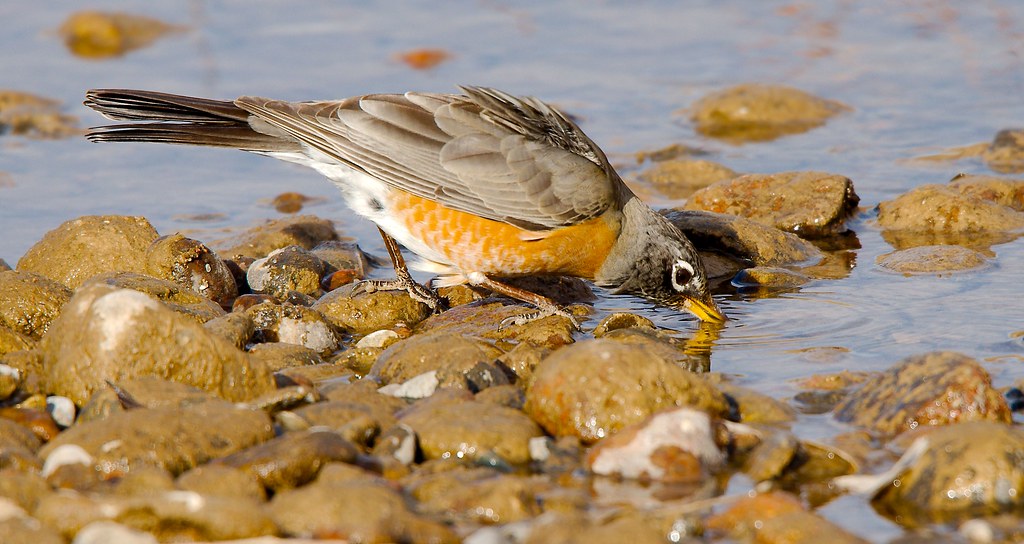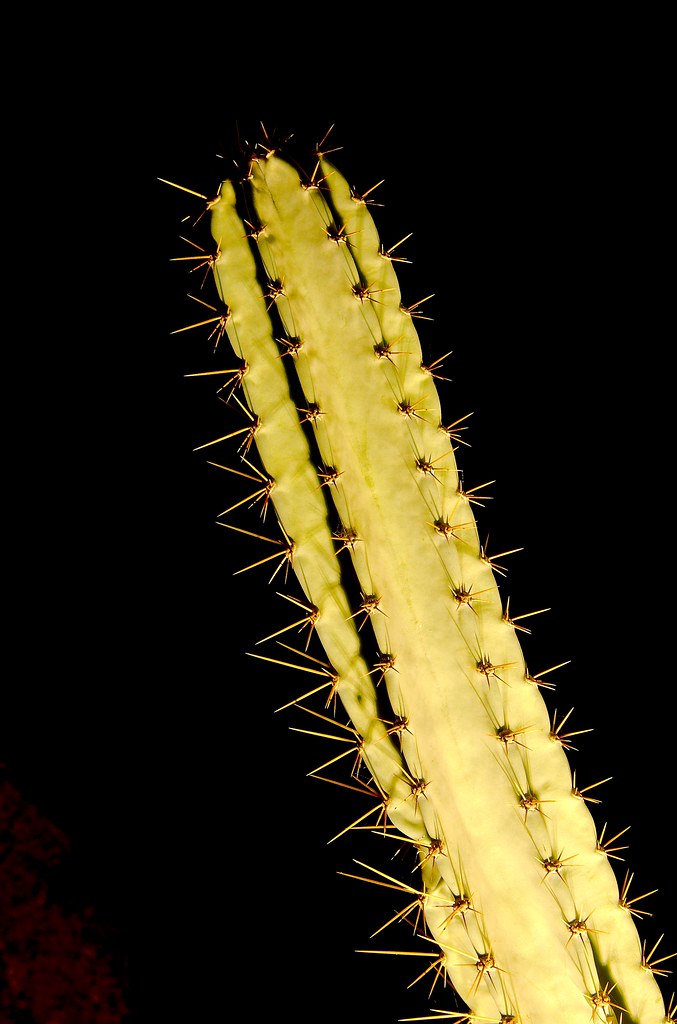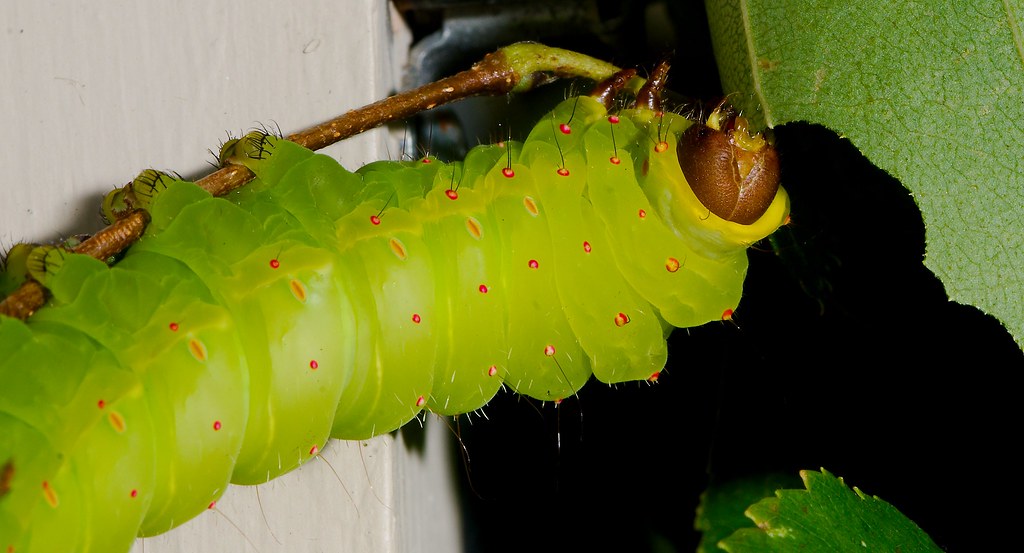If you look closely, you can see the the seal’s head it coming out of the water, but the body is bent. This is due to refraction of light as it exits the water … and the fact that seals have necks.
Category Archives: Truth
On People, Tigers, and Teeth
A few days ago, someone broke into a zoo and was bitten by a tiger. This happens and, based on my discussions with zookeepers, is one of the fundamental design criteria when creating an exhibit. Yes, it is important to create a place in which the animal can be as intellectually and emotionally fulfilled as possible, and that it be kept healthy and kept from getting out. However, it’s just as important to keep people from getting in. If you follow zoo news, you’d notice that there about as many stories about stupid people breaking into cages as there are about clever animals breaking out.
Below, however, is a list of headlines for this one single incident. This comes from a Google Alert on the word “zoo” because I find it’s a good way to get an unfiltered view of what’s happening. This one, however, is fascinating because of the way the headlines came out. Take a look at the headlines below, then, if you have time, take the time to read McSweeny’s “Interactive Guide to Ambiguous Grammar,” that explores this issue deeper more deeply than I will be able to.
Basic statistics
This is a list of 56 different headlines for the exact same incident. Let’s take a look at what the authors thought were the most important pieces of information for us to know:
- All of the articles mention a tiger. That makes sense. After all, that is the news story here. If someone breaks into the zoo, but behaves perfectly politely while inside, it likely would not have received nearly as much media attention.
- 50 articles, 89.2%, think that the person’s sex is important information. Sure, the English language would use “man” in this context should things be reversed, but still, I have my doubts as to whether or not sex and gender are a critical factor in tiger bites.
- 20 articles, or 35.7% of them, feel that it’s very important that you know the person was drunk or allegedly drunk. Early articles mentioned that she was high, but subsequent ones suggest that her reactions were due to shock. As that phrasing doesn’t appear in these headlines, I am ignoring it.
- Speaking of “allegedly”, a mere six articles, just over ten percent, mention that it’s still rather recent information and all the facts aren’t in yet. Two of them say that there may or may not have been trespassing. Four of them say that there may or may not have been drinking involved. None of them give the tiger an out though. Everyone seems certain that the bite came from a tiger.
- Some of them, 12.5%, think that it’s important you know that the bite came from a three-legged tiger. I’m not sure if that implies that it’s somehow worse to get bitten by a disabled animal, or if they’re going for the irony angle of an animal with three appendages damaging someone’s fourth.
- One headline – only one – mentions the person’s name.
Culpability of Entrance
However, digging a bit deeper, let’s take a look at culpability and blame. The facts are that it was after hours, the zoo was closed, and the area in which the tiger was located was off limits both during the day and at night. In order to get bitten, the person must have:
- Cross the external zoo barrier, be it over a fence or forcing a door (that’s how zoos work)
- Cross an internal zoo barrier to gain access to the tiger (that’s how zoo exhibits work)
- Cross a personal barrier, as otherwise the tiger wouldn’t have chosen to bite (that’s how cats work)
- Cross a time barrier, by entering the zoo after hours (that’s how opening hours work)
After all, if you were relaxing at home after a difficult day, and someone came into your yard, broke into your house, and tried to pet you, you’d probably bite them too.
Interestingly, of all the articles in this feed, only five describe the event as using anything other than “bite” or “bitten”. We get “hurt”, “injures”, the pretty intense choices of “mauls” and “chomps”, and my personal favorite “things go … wrong” (that’s midwestern understatement right there).
So we’re pretty sure we know what happened, but who was at fault in the view of the uninformed Internet writers who weren’t there? (Of which I am one, of course.)
If we view breaking or sneaking into a place or trespassing as a wrongful act, a whopping 69.6% of people seem to think the person was at fault. But really, it’s more of a spectrum. If we view breaking in to a place as worse than trespass, which is worse than evading security or sneaking around, you get the following breakdown:
- “Broke in” – 14
- “Trespassed” – 7
- “Snuck in” / “entered after hours” / “evaded security” – 24
- No blame assigned to the person’s entrance – 5
(There were also six headlines that were unrelated to the entrance part of the story.)
What’s interesting here is how many writers seem to feel that the person was at fault in some way, but that entering a zoo after hours isn’t as bad as, say, breaking into a bank or house. “Sneaking” being less bad than “trespassing”, and “evading security” being less than “breaking in”, at least so far as most people use the words. Personally, since it’s a lot easier to replace stuff than it is to replace an endangered species, I don’t agree, but I seem to be in a minority here. (But at 25%, not a super tiny one.)
Culpability of the Bite
The other interesting way to view this list is to look at the act of the bite itself. Did the tiger bite the person or was the person bitten by the tiger? In the former case, the tiger has the agency to act and is an active participant in the incident. In the latter, the only actor in the story is the person, so they are completely to blame for what befalls them.
With this view comes a higher sense of blame than if you view the situation as one in which the person made a mistake and something bad happened to them as a result, such as if they chose to wander too close to a ledge and fell off. No one thinks the ledge is at fault in such a situation, so the say “the person fell off the ledge”, not “the ledge threw the person”. If, however, the person is walking at a safe distance and there was a problem with the ledge, we would say “the ledge gave way”.
So if we review the list once again, looking at the bites, we learn that the active voice was used 13 times, whereas in 39 times the headline writers used passive voice. Thus, three times as many people chose to attribute the bite to the person than to the tiger based on very limited data.
The Stories We Tell Ourselves
None of these findings should be a surprise. They do, after all, match the story we want to tell. We like scary animal stories, but we also like stories about underdogs and stupid people. Specifically mentioning the fact that the tiger only had three legs and was old, casts the tiger as the underdog. Specifically mentioning that the person was drunk and female (unfairly) connect to many societal narratives about stupid people getting their comeuppance. So here, we have the scary incident in which a tiger bit someone, but we get to wrap inside a narrative where a female person who was probably drunk broke the rules and paid for it.
Consider the two most opposed headlines:
- Allegedly Drunk Zoo Trespasser Bitten by Elderly 3-Legged Tiger
- Tiger bites woman at Omaha zoo
In one story, we have a bumbling person violating law and normal expectations of society, tormenting an old, infirm, animal, and getting their just rewards. Extending this story from the other headlines of this type, we have a stupid woman screwing up and getting punished. This, sadly, is a story that we, as a society, love to tell.
In the other story, we have a vicious animal that attacks a poor, defenseless, woman. Again, this is a story that we, as a society, love to tell.
Implied Roles of Humans, Animals, and Zoos
So what does all of this mean? Is it just an interesting linguistic exercise?
I have to think no.
We are, at this time in history, faced with a fundamental question around the issue of animal rights. On one side, we have a group of people who believe that animals have no rights at all, that humans are intrinsically better than everything else, and by right of might or innate superiority, that we should be able to do whatever we want.
On the other side, we have people who believe that animals have rights, though the nature of those rights is under pretty fierce debate. There is the right to live which everyone (except, oddly, some extremist animal rights groups) seems to agree to. However, whether animals have a right to not be held captive is in direct opposition to their right to have a place to live in the wild. It doesn’t make much sense, but a lot of the animal rights fights around zoos are happening around this very basic issue.
While this is often stated as people being pro-zoo and anti-zoo, the discussion that is actually happening is really this:
- One side says that animals shouldn’t live in zoos.
- The other says that animals shouldn’t have to live in zoos.
It’s a discussion, at the core, about conservation of land and ecologies. That is not, however, the story we want to tell. We want to tell a story about stupid animal rights activists (often described as weak-hearted women) going up against the hunting / food / testing / zoo establishments (often personified as the manly men that have sometimes headed them), and getting what they deserve.
We want to tell a story about young, determined people (again, often described as women) going up against the cruel, vicious, zoo world, and we want to feel bad when they can’t free the polar bear or elephant from their painful captivity.
Personal Views
Personally, I do not blame the tiger for responding to what was likely interpreted as an attack. Whether the tiger had three legs or was elderly is irrelevant. An animal in captivity grows accustomed to their environment in the same way an animal in the wild does. Even in captivity, there are times when people are around and times when they are not.
In almost all of the cases I’ve read where an animal attacks in a zoo, it is because their environment changed in a way they didn’t anticipate. This the same whether a surprise human appears and steps into their personal space or a fleet of bulldozers appears and removes the forest behind their fleeing feet.
Also, I believe the woman made a mistake. Looking at some of the articles about this situation, she has a history of making mistakes. While it was probably inevitable that she would eventually get seriously injured or killed if she continued that pattern of behavior, I have a hard time thinking that anyone deserves to get their hand gnawed upon by a tiger. I empathize because, like her, I think tigers are pretty neat.
At a larger scale, I find it interesting how different people chose to report this incident. I wonder how different things would be if the person who was bitten was male, if the incident had happened at a less well-respected zoo, if it had been another type of animal than a tiger. I look at the biases inherent in the language used in the headlines alone and suspect it shows multiple divides within our society.
I see these same divides actively harming animals that the animal rights group claim to want to help. I wonder if there is any way to get the more action-oriented groups to spur on the more careful groups, as the situation is pretty dire for many species. At the same time, I hope that those groups who understand the complexities inherent in conservation can do something to soften those groups often referred to as “radical”. I wonder if their energy can be guided in directions that will help to create the environments in which we all want these animals to live, rather than just focusing on the easier task of destroying the environments that are not ideal.
Just as in language, order matters in conservation. The difference is, with language, we can sit down and talk to work things out. If we do things in the wrong order when lives are on the line, there may be none left when we finally get things right.
Pawnee Skipper
This is a pawnee skipper, though the photo is misleading as lepidopteral tweezers are not actually a common predator. I was fortunate enough to see this species because I won a butterfly outing at a fundraiser for the Minnesota Zoo.
(Side note: Oddly, I was the only bidder … who doesn’t want to spend a day climbing hills pursuing endangered butterflies? What’s wrong with people?)
Anyway, we set out early in the morning to get to an area of untouched post-glacier land in Western Minnesota, where we started checking out hills. Did you know that there are some butterflies whose life-time range consists of the top of a single hill? Scientists call it “hilltopping”, but I call it a rather limited world view and a risky strategy. Nonetheless, there exist these butterflies called the pawnee skipper that are rare to begin with and, as humans level hills to make land for farming, they’re getting ever more rare.
Counting them is also difficult, because they fly really quickly and they all look like one another (a not uncommon problem for counting a species, actually), so when we caught this guy, we put him in an envelope for a while to see if any more came out. We then saw two more, presumably fighting for the top of the hill, as we’d just caught the alpha male.
(Side note: Yes, you are living in a world in which there are not only alpha butterflies, but in which butterflies fight with one another to become alpha. Think of it as Barbie Mariposa and Her Butterfly Fairy Friends meets Fight Club.)
After counting three, which was two more than last year’s count for that particular hill, we went off for more generalized butterfly catching. I was tired, as I’d only been home from Peru for about three days, but the times in which this sort of work can be done is limited. Butterflies don’t live long, after all, and the conditions have to be just right. I am hopeful that I’ll be able to do this again and that we’ll hopefully also be able to set something up more locally so more people can join us.
Goodbye to Harapan
This is Harapan. He is a Sumatran rhino and, as of this morning, no longer lives in the Cincinnati Zoo.
The zoo’s 30 year old Sumatran rhino breeding program has ended and Harapan has been sent home to be with the others of his species. All one hundred of them. Let’s ponder that for a minute.
The fact is, it’s hard to breed rare species. We’ve made tremendous progress, considering how short of a time humans have been trying, but the fact is that the captive breeding project for Sumatran rhinos hasn’t gone nearly as well as those for other species of rhinoceroses.
Sadly, neither has wild conservation. Originally living in throughout South East Asia, as of today, they can now be found only in:
- Malaysia – Three captive, one wild
- Sumatran Rhino Sanctuary – Five captive + Harapan, arriving shorly
- the island of Sumatra – Around 90
(Source: Save The Rhino)
So let’s look at that again:
That’s still a lot of rhinos. I mean, the Southern White Rhino went from 20 individuals to 20,000 in a hundred years. So there’s reason to hope.
However, Indonesia is on fire.
No, really:

(Source: Global Forest Watch , October 30th, 2015)
So this means that our happy little rhino square could soon look like this:
And then:
Which means that, because people today like Starbucks, Pepsi, and Kraft, their children might never see . . .
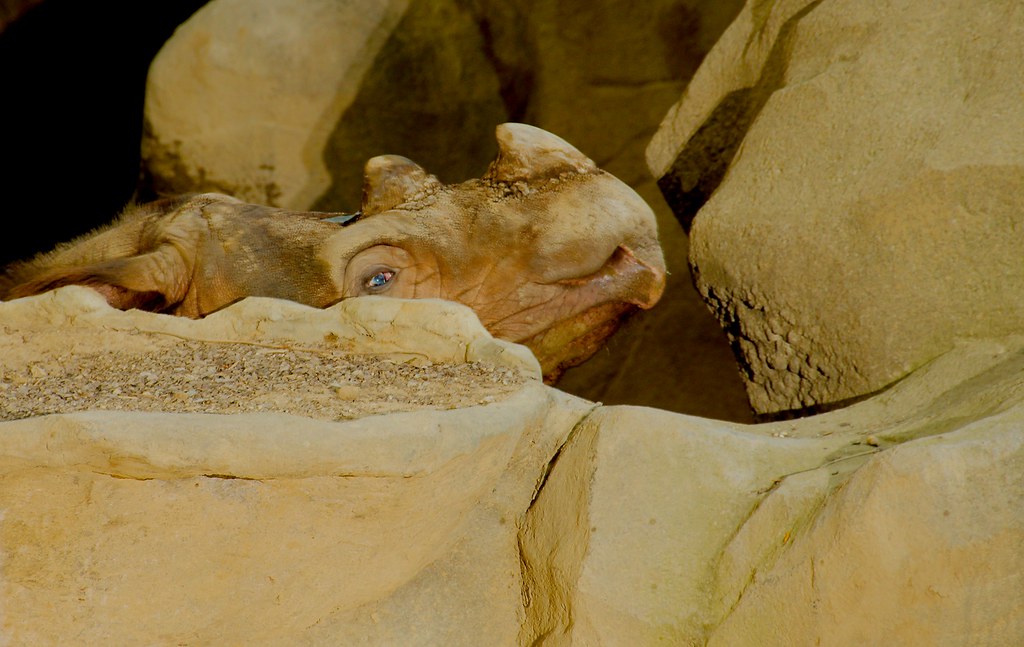
A little furry rhinoceros playing hide and seek.

A tiny forest rhinoceros wearing a leaf as a hat.
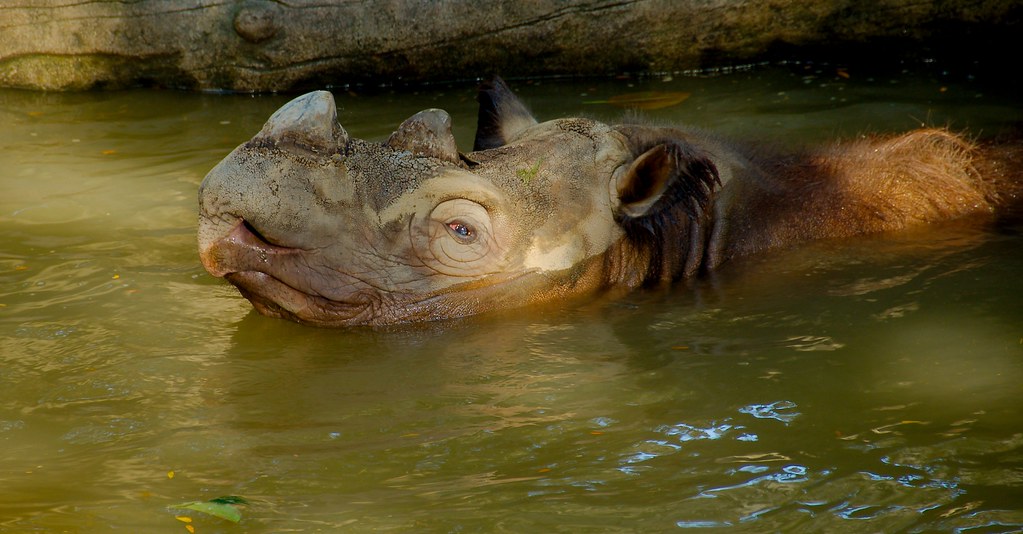
Or a soft, buoyant rhinoceros pretending to be a submarine.
I’m glad I got the chance before they were gone.
For more information on the palm oil issue, see the latest scorecard.
Swallow
I had long wondered how these nests were made, so I paused for a while to watch them. First, each glob of mud is about one beak’s worth. Beaks hold a lot more mud than it looks like they do. They create a row of mud at the bottom of the nest. It’s a slow process because there is often little room for footholds, so they sort of spit it out as they hover in the air. If you’ve ever seen these guys fly you know they’re not exactly built for hovering.
Anyway, it takes a while, but they eventually get a row about three little mud globs deep and as wide as they need to land on them. It’s a good things birds are light and that summer days are hot, because the line is just about firm enough for them to land on. This is when they start to firm up the row and build upon it. Then it’s back and forth and back and forth between the mud and the cliff face (or bridge, in this case). It’s exhausting, and sometimes they pause to rest a bit. That’s when things get interesting.
See, they live in a group and some of them, once they’ve started, seem to decide that it would be nice if the mud were a bit nearer. Then their neighbor flies off to get more mud for their nest. Opportunistically, the resting bird will glance around to see if anyone is watching (humans apparently don’t count), and zip out to steal their neighbor’s fresh dollop of mud and add it to their own nest. Then they make sure to just be resting there when their neighbor comes back.
I watched this process happen about three times before the victim bird caught on and there was a bit of chasing going on. I don’t know how common it is, but it’s somewhat nice to know that it’s not just humans that are assholes to each other when they’re tired.
Stairs
Couch’s Spadefoot Toad (Scaphiopus couchii)
Cheetah (Acinonyx jubatus)
Cheetah (Acinonyx jubatus)
Black Vulture (Coragyps atratus)
River
Rock
Robin
Swainsons Hawk (Buteo swainsoni)

Once upon a time, Pueblo Colorado had a steel mill. That time was a while ago and, as often happens, when the largest employer leaves, there’s not a lot left behind. Pueblo has a zoo, which I went there to see but the combination of reduced revenues and the onset of winter meant that many of the animals were off exhibit or no longer there. So instead of spending my day at the zoo as I had planned, I popped next door to their raptor center. The center does rescue work and most of the birds there either couldn’t fly or couldn’t take care of themselves so they’re kept in fairly large enclosures. Some of the photos turned out. A lot didn’t. However, as I taking the photos, one of the rescue workers came out and offered to bring a bird out for me to see close up.
I picked the Swainsons Hawk because I’d never seen one close up.
As is often the case, I picked the most cantankerous creature there, who was hard to catch and spent a lot of time trying to eat my new friend’s fingers. However, every once in a while, the lighting landed at the right time and shots like this came out.
Cactus
Bobcat (Lynx rufus)
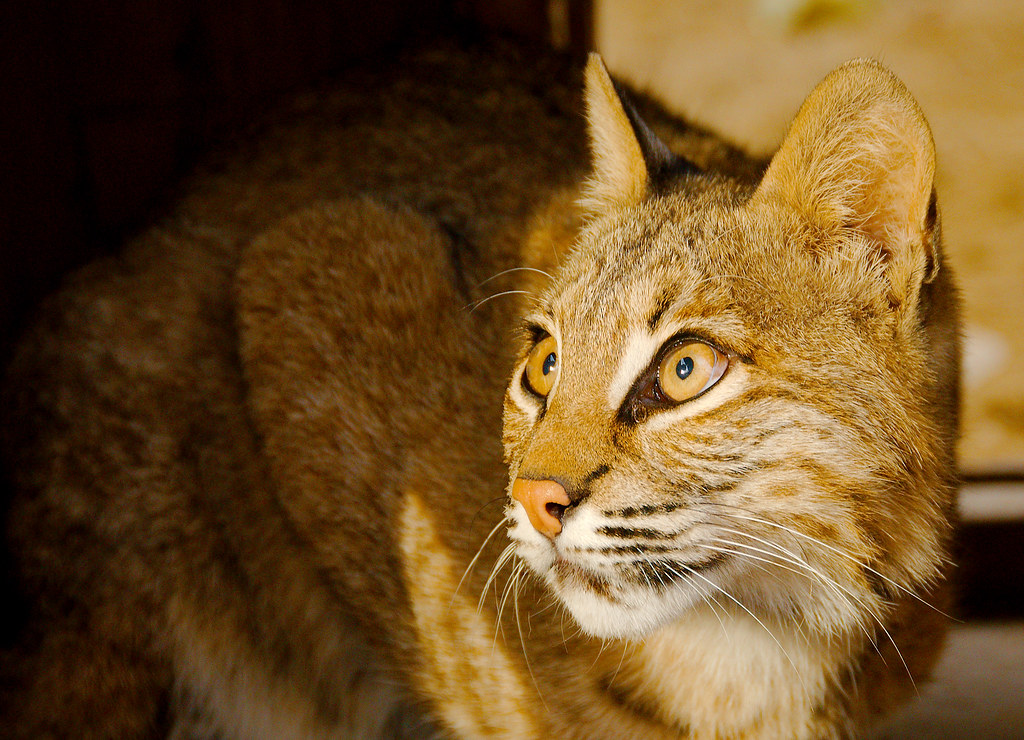
This bobcat was taken from the wild and turned into a house pet, then was terribly malnourished and confiscated by the state. He eventually wound up at the zoo and, under their care, was given medical treatment and moved over to a diet of true meat (as opposed to the frozen fish sticks he had been eating). This photo was taken on the first day he was allowed outside in his new home. You can tell that he’s not entirely sure what’s going on.
One year later, I visited again. I could get no photos because, once he became healthy, he became a wild animal once again and it was no longer safe for me to be near him.
Photographs are a moment in a time. At the time I took this photo, he was a sick, scared, wary little cat. Today, he is a powerful, dominant near-wild animal. While I’m somewhat sad that I can’t get photos of him anymore, I’m happier at the same time.
Preying Mantis

A while back, I read Your Inner Fish by Neil Shubin, which discussed the basic plan of chordates and how all animals have similar growth patterns. Interestingly, he briefly mentioned similar findings for insects as well, at a genetic level. This would imply that, if we could find the right genetic tweaks, you too could get Batmanesque arm spikes.
Caterpillar
Palm Cockatoo (Probosciger aterrimus)
Mudskipper

It is believed that the first fish to move onto land did so to avoid increased predation in the seas. This makes sense, because if there was little on land but plants and insects, it would be a safe place to be, so long as you could handle the sun. Today’s fish, not so much. If you’re leaping out of the water, you’re coming into a land that has birds, cats and crabs to eat you as well as the same sorts of insects that existed millions of years ago. This is of particular interest because those three types of animals (avian, mammal, insect and arthropod) have different kinds of eyes. Thus, if you want to be safe, you have to be able to see them without them seeing you. On top of that, you want your camouflage to work underwater as well. Thus, you get this type of patterning, where the top and sides match the rocks on which the fish sits and the bottom is lighter to blend in with the brightly-lit surface. You can also see a light speckling presumably helps to break up the pattern for those predators with eyes tuned for smooth expanses (such as the compound eye on an insect, I hypothesize).
One thing I’ve long wanted to do is get cameras that can see the infrared (like snakes) and the ultraviolet (like birds and insects). The camera helps you to see things you otherwise wouldn’t, and by adding things like macro lenses and microscopes, you can see closer like smaller animals do. Telephotos let you see like some birds. A polarizer can help you to see like some crustaceans and mollusks. But it takes different technology to extend the spectrum and, even then, it’s only an approximation. Still, I think it’s one worth (eventually) pursuing.
